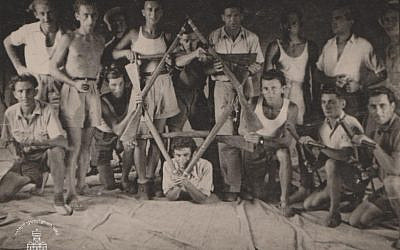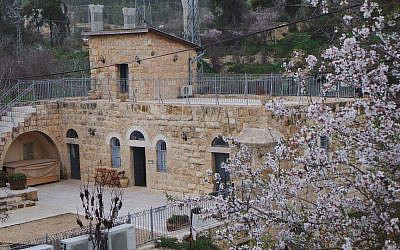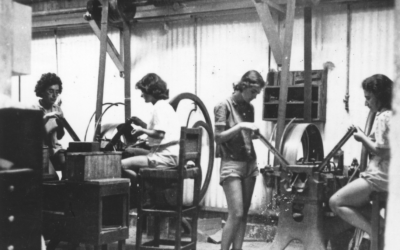אין מוצרים בסל הקניות.
THE BLOGS - Tania Shalom Michaelian
Hot Summer Happenings at Israel Heritage Sites
פורסם: 13.3.2023
With all that Israel has achieved in hi-tech, medical technology, agriculture, environment, and military might, it’s easy to forget that only a century ago, the country was almost unrecognizable compared to the vibrant, cosmopolitan land that we live in today. There were no shiny, multi-story office blocks, no fast trains connecting cities and no highways crisscrossing the country from North to South
Of the 600,000 or so Jews living in Eretz Yisrael on the Eve of the Declaration of Independence, up to one third of them were living in remote country areas, isolated from the main cities such as Haifa, Tel Aviv and Jerusalem
They lived through incredible hardships, diseases, Arab attacks, droughts, famine and persecution by the ruling Turks and then the British
But the population had a pioneering spirit never seen before. They acquired tracts of land to farm and build their homes. They invested in technology, developed their language, and created a society, government and army that would form the basis of a country they had been dreaming of for 2,000 years
Those fateful years before Independence form the very basis of the Israel as we know today. The people who lived in the pre-1948 years contributed so much to our present, that they deserve to be remembered and honored in every way possible

Honoring Israel’s Heritage
Yigal Allon, commander of the Palmach and later an IDF general and politician once said: “A nation that does not respect its past will have a dull present and an uncertain future.”
These words seem to have been a call to battle for the Society for the Preservation of Israel Heritage Sites (SPIHS), a non-governmental organization that works tirelessly to locate, restore and preserve heritage sites in Israel that are symbolic of the state’s path to independence. SPIHS serves as an umbrella organization for all the heritage sites in Israel and oversees over 200 of them – from the Galilee to the Negev and from Jerusalem to the sea
The historic buildings, schools, synagogues, train stations, detainee camps and homes conserved by SPIHS tell the individual stories of the men and women, the organizations and the societies, the artists and the farmers, the soldiers and the statesmen, and how they all played an integral part in our path to Independence

Passing on the Stories to the Public
SPIHS also works hard to bring these stories to the public and has built museums and visitor centers with the help of JNF-US, to make them accessible to anyone who wants to learn more about their heritage
The sites run holiday activities, educational tours, musical evenings and other cultural events throughout the year
The hugely popular SPIHS Israel Shabbat campaign, launched together with the Ministry of Sport and Culture, sees scores of heritage sites offer free admission to the public on Fridays and Saturdays
Throughout the month of August, heritage sites will be running summer activities for all ages, offering the perfect opportunity to enjoy very affordable – and often-times free – entertainment, while educating about this crucial part of our history

Key Heritage Sites
While every heritage site tells its own special story, there are a few that stand out. Here are three of the most popular SPIHS heritage sites, to whet your appetite
The Atlit Detention Camp Heritage Site
Sprawled across 25-acres on the coast just south of Haifa, Atlit tells the story of clandestine immigration prior to the establishment of the state
Features include a model of the original camp, the fascinating Galina ship exhibit, reconstructed prisoner barracks and a disinfection room
Recently, SPIHS added a new exhibit which unveils the unheard story of clandestine immigration from Muslim countries. The focal point of this exhibit is an original C46 airplane which was flown in the heroic Michaelberg Operation to bring 100 young Iraqi Jews to the land of Israel in 1947
SPIHS is currently working on a masterplan to turn Atlit into a primary tourist attraction, by building new exhibit halls and a state-of-the-art entrance pavilion

The Ayalon Institute – Bullet Factory Rehovot
Right under the noses of the British, over a period of three years, 45 brave youngsters sat in a small factory eight meters underground, producing 9 mm bullets for Sten machineguns used by Palmach fighters
An interactive tour takes visitors underground where they descend the secret spiral staircase hidden by a working laundromat. You get to see the machinery used to make the bullets and hear stories about one of the most fascinating chapters in the history of the establishment of the state

The Valley Train at Kfar Yehoshua
The Valley Train operated for nearly 50 years and linked Haifa to Damascus. The mythological train played a huge role in the settlement of the beautiful Jezreel Valley by transporting products and people to and from the remote countryside
One of the most important stations on the train’s path was located near the entrance to Moshav Kfar Yehoshua and has been restored to all its glory by SPIHS
The site contains seven impressive stone buildings in Templar style, including a water tower and a water well, three freight cars dating to the time of the British Mandate and a visitor center
There are guided tours of the site, and regular activities for children such as workshops, table games and climbing ‘Ninja’ bars, keep the youngsters happy
There’s even a great food cart on-site

How to Pre-Register Your Visit to Heritage Sites
Wherever your travels take you within Israel this summer, there will be a heritage site worth visiting
To plan your summer outings and for more information about the sites from North to South, click here
Follow the SPIHS Facebook page for regular updates about new developments, exciting events and special exhibitions and special projects such as Heritage Tuesdays and Israeli Shabbat
Pre-booking is required for space purposes
All photos credited to SPIHS
Some of these articles were originally published on the Times of Israel blogs
חדשות ועדכונים אחרונים
עוגיות
אתר זה משתמש בעוגיות כדי לשפר את הפונקציונליות של האתר, לספק לך חוויית גלישה טובה יותר ולאפשר לשותפים שלנו לפרסם לך.
מידע המפרט על השימוש בעוגיות באתר זה וכיצד ניתן לדחות אותם, ניתן לצפות במדיניות העוגיות שלנו.
על ידי שימוש באתר זה או לחיצה על "אני מסכים", אתה מסכים לשימוש בעוגיות.





